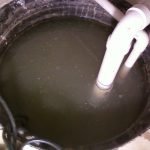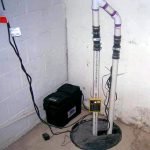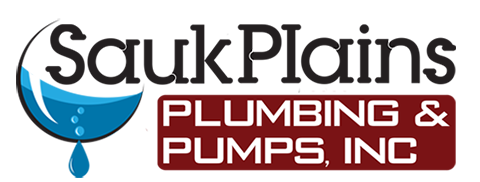
Your sump pump is your first line of defense against water damage from heavy rain and melting snow in Middleton WI and the surrounding area.
“Near-record rain swamps Dane County.” Sound familiar? It was just last year when headlines like that led the news for days.
As many of your neighbors learned the hard way last year, you cannot assume a sump pump will always kick into action when necessary. Like any other machine, it needs regular maintenance. And, they don’t last forever. Pumps must respond on demand. When they don’t water damage is a sure bet.
More than 60% of American homes are subject to some kind of water damage every year when the pump in their basement fails – accounting for more than $9 Billion in restoration costs! The cost to repair and replace possessions lost or damaged because a pump failed ranges from a few dollars to thousands. And that doesn’t include dealing with mold, mildew or structural damage.
Sometimes pumps sit for extended periods without running. If they’re sitting in a few inches of southern Wisconsin’s hard water, deposits might build and clog the intake and moving parts. When the time comes to work, they cannot.
Do Not Assume Your Sump Pump Works

Even if your pump worked perfectly the last time you needed it, don’t assume it will tomorrow. Professional plumbers recommend testing and inspecting a your home’s pump three or four times each year.
A do-it-yourself checklist for a pump test includes:
- Look it over closely – take a close look at the pump and all the fittings. Be sure air holes, vents and intake ports are not clogged. Check the outlet connections for leaks. Check the float switch, make sure it moves up and down easily – if it jams the pump may not come on and the basket will eventually overflow.
- Prime the pump – sitting without activity, moving parts dry out and become stiff. A motor can seize and fail. Pour a bucket or two of water into the sump basket and let the pump run. It’s the easiest test – either the pump runs or it doesn’t.
- Clean it up – the pump usually sits in at least a little water that forms a slimy, gummy residue. Minerals and debris in the water settles around the intake and can jam up components inside when the pump starts. Check for loose pebbles, sand and gravel, too. Run a solution of white vinegar and water through the system to clean out the intake and pipes as it removes deposits and hard water crusts.
Leading Causes Of Sump Pump Failure
Two common causes for a pump to fail are the most preventable: old age and poor maintenance. A routine check and regular maintenance by a licensed plumber head off a lot of problems. Years of use and wear take a toll on all machines. A sump pump’s lifespan is somewhere around 7 to 10 years under normal use so make sure you hire a pump servicing Waunakee expert. Consider a new one if yours is in this age group – especially if it is called upon to work often.
There are threats to your pump and system that are less predictable, including:
- Power failure – storms that pour flooding rains into the area are often accompanied by lightning and high winds – a deadly combination often knocking out power. No power means no pumping. If the outage is short, the damage may be minimal. If not…
- Battery backup – many Middleton and Cross Plains area residents faced days without power in 2018’s record storms. Basements were damaged when sump baskets overflowed. There was nothing to pump the water out. With that historic perspective, consider the benefits of a battery-powered backup system. It can be a lifesaver – at least a property saver. Installing a second system isn’t expensive – especially balanced against the cost of potential damage.
- Jammed switch – the most common mechanical failure is a stuck switch. It happens when the pump shifts inside the basin (be sure you put it back exactly right if your take it out for an inspection – test the switch). It also happens if there’s debris in the basin that can float around.
Make Sure Your Sump Pump Fits
One size does not fit all. Knowing how much horsepower your pump requires to keep your property safe is a science. How do you match your sump system to your home and surrounding neighborhood? Why does size matter? Consider;
- When a downpour is so heavy your pump is working constantly there’s a risk it cannot keep up with the flow. It may be too small for the challenge.
- A pump that’s too large for normal use is inefficient most of the time and costs more. Unfortunately, a pump that’s too small works too hard and has a shorter lifespan.
How much capacity do you need? A professional plumber can calculate the rate of flow you can expect – about 35 gallons per minute is considered average for most areas. If you’re in a location prone to neighborhood flooding, consider something more powerful. Pumps that move up to 60 gallons per minute are available. Although they are electric, pumps are usually rate by horsepower. Models in the 1/3- or 1/2-horsepower range are the most common.
Routine inspections and troubleshooting are cost-effective forms of home protection. Call Sauk Plains Plumbing at 608-798-2121, for sump pump troubleshooting, maintenance and installation in Cross Plains, Verona, Waunakee and Middleton WI.
